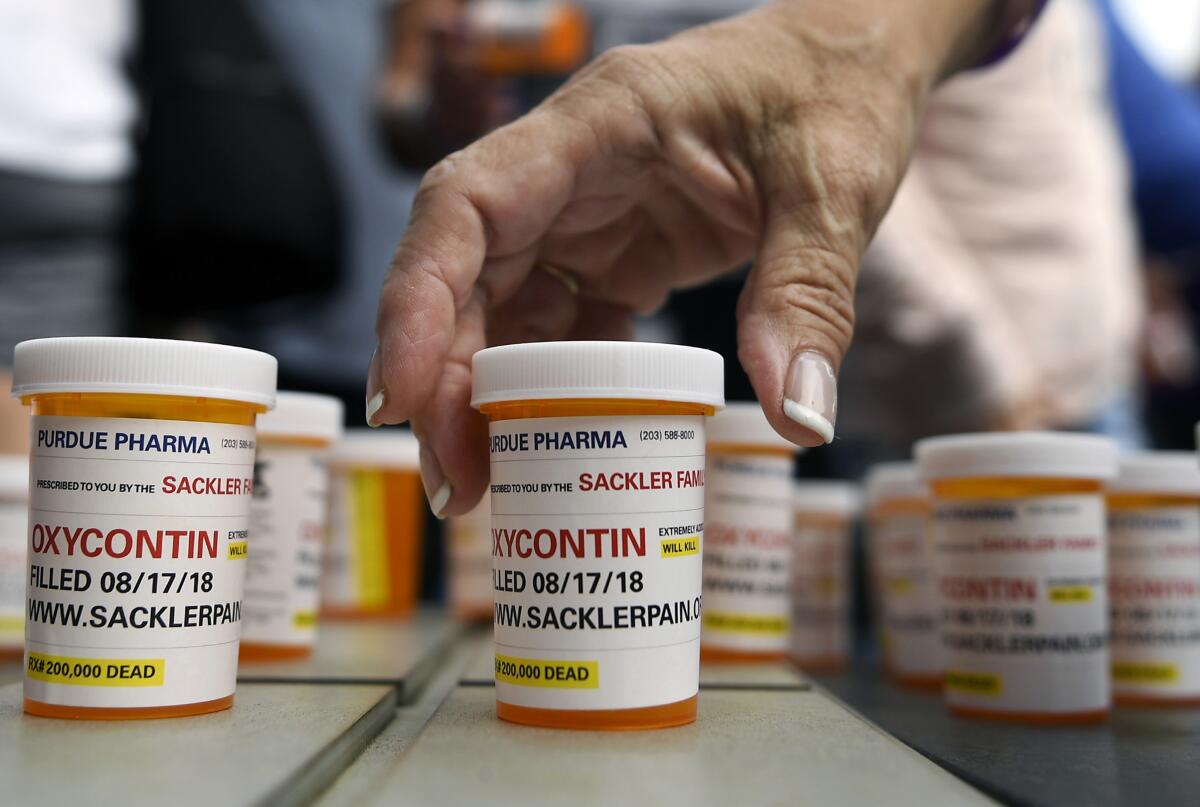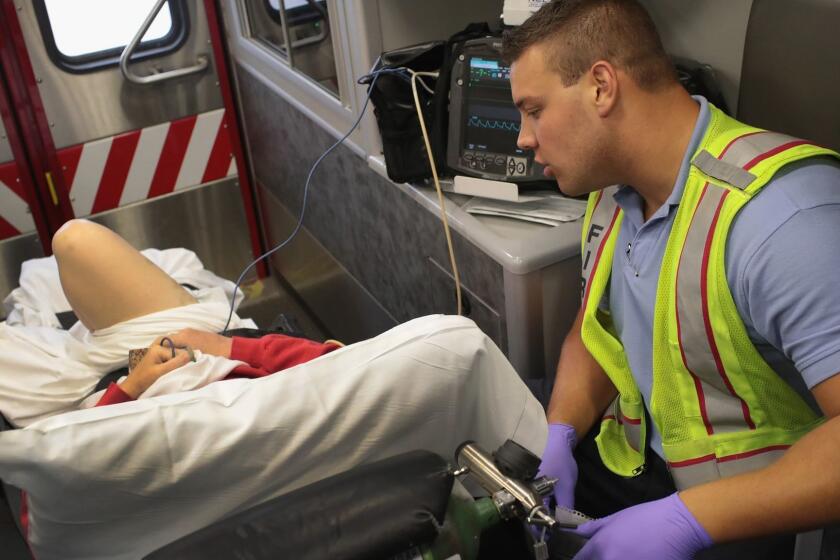Before COVID-19, U.S. overdose deaths in 2019 reached new peak of 71,000

- Share via
Nearly 71,000 Americans died of drug overdoses last year, a new record that predates the COVID-19 crisis, which the White House and many experts believe will drive such deaths even higher.
Preliminary numbers released Wednesday by the Centers for Disease Control and Prevention show the trend is driven by fentanyl and similar synthetic opioids, which accounted for 36,500 overdose deaths. Deaths involving cocaine and methamphetamine also are rising.
With billions of dollars devoted to ending the opioid epidemic, policymakers had hoped overdose deaths would continue to decline, or at least plateau, after 2018 showed a dip for the first time in three decades.
“We got it to stall out a bit. Now we need to grab on again and not let this get away from us,” said Robert Anderson, who oversees death data for the CDC.
Assistant Secretary for Health Adm. Brett Giroir called the news “a very disturbing trend.”
“We understand that there is an extraordinary amount of work to do, especially now as we are also dealing with the COVID-19 pandemic that could markedly affect our nation’s mental health and risk of substance use,” Giroir said in a statement.
In the nation’s opioid epidemic, the carnage is far from over.
Initially driven by prescription opioid painkillers, the U.S. overdose crisis “has been shape-shifting,” said Brendan Saloner, an addiction researcher at the Johns Hopkins Bloomberg School of Public Health. Users migrated first to heroin and then to fentanyl, a cheaper, stronger drug that displaced heroin in many drug markets.
With more than 30 states showing rising overdose deaths in the new data, Saloner said, “I see a map of despair.”
A small bright spot: A cluster of states in the Northeast — Massachusetts, New York, Vermont, New Hampshire and Rhode Island — saw declines. These are states that have shown commitment to preventing overdoses among active drug users and getting people into treatment when they are ready, Saloner noted.
“We definitely should not give up,” agreed Katherine Keyes of Columbia University. “Some states are showing remarkable successes.”
With public health efforts focused on the pandemic, the outlook for additional improvement may seem bleak. But access to treatment drugs for opioid addiction has improved somewhat, with some government restrictions easing on buprenorphine and methadone. Evidence shows those medicines help people stay in recovery.
The coronavirus pandemic has disrupted many industries, both legal and illicit. Production of fentanyl, which relies on chemical ingredients sourced mainly from Wuhan, China, has been particularly hard hit.
The pandemic may have temporarily disrupted the supply of illicit fentanyl from China, but such temporary shortages in supply wouldn’t be enough for overdoses to turn around, said Bryce Pardo, a drug policy researcher at the Rand Corp.
The pandemic is likely to be creating more demand among users, many experts said.
“People are feeling a lot more despair, anxiety and rootlessness,” Saloner said. “That leads to more problematic drug use and more risk of overdose.”








